
.
.
| East Coast and West Coast: 31 August 1927 - 6 February 1931 |
| Departing for the Pacific on 6 September 1927, was the first of 9 transfers
between the Atlantic and the Pacific during this period. The relocation would involve Panama Canal crossings 3 through 11 of the 16 such crossings. During this period, Texas was the flaship of the US Navy VIPs came aboard: Charles Lindberg,and President Coolidge San Pedro (Port of Las Angeles) was home base. During the Pacific period of June through October 1930, the first visits to Hawaii were made.The islands off of Southern California were areas of gunnery and maneuvers In October 1930, $100,000 was the monthly cost to pay the ship's crew of 1,200, as reported by the New York Times The arrival and departure of the fleet still drew a lot of newspaper coverage. During an August 1930 port call to Seattle, the Seattle Post-Intelligencer published a fleet anchorage map, identifying locations and names of the ships. The battleship names reads like Battleship Row, Pearl Harbor, December 1941 April 1930 TEXAS escorted the SS LEVIATHAN into New York City. The LEVIATHAN was carrying the American delegation returning from the London Naval Conference of 1930. |
| Flagship US Navy: 1 September 1927 - 15 September 1931 |
After completing modernization, TEXAS sailed into New York City, 31 August 1927 to resume regular US Navy service. On 1 September, TEXAS became the flagship for Admiral Charles Hughes, Commander-in-Chief, United States Fleet. TEXAS remained the flagship until replaced by the PENNSYLVANIA, 15 September 1931.
As of September 1927
 |
| 1930: Hawaii and Gunner/Maneuvers | ||
 |
||
| 1930: Gunnery/Maneuvers |
 |
| Airplane Types Aboard: 3 thru 6 of 10 |
Unless noted, the time periods for the airplanes are when they were assigned and reassigned from sources published by William T Larkins
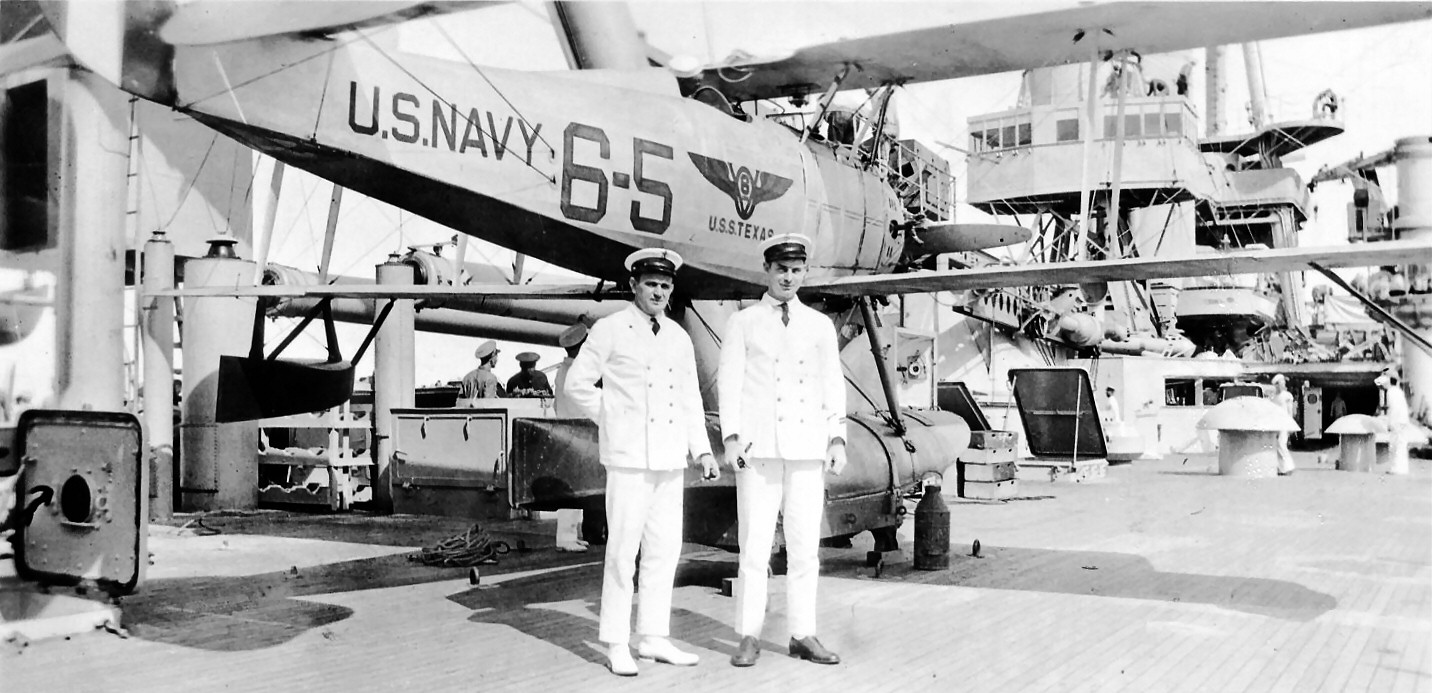 |
#3 UO-1 by Vought |
11 November 1926 to 3 July 1928 In the photo, the officer has white shoes and the enlisted man is wearing brown shoes. The October 1928 issue of the ship's weekly newspaper states a catapult launch of the UO-1 was quite a jolt for the 2,600 lbs airplane was launched by a catapult designed to launch a 6,500 lbs airplane. The UO-1 first came aboard in the fall of 1923 and operated at the stern of main deck. To launch the airplane a boom picked it up and lowered it into the water for take-off by the planes own power | |
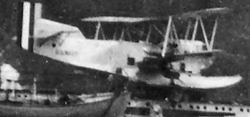 |
#4 OL-6 by Loeing |
1 January 1927 to 27 June 1928 The 20 October 1928 ship's newspaper refereed to the airplane as "the duck" and did not have anything positive to say about the airplane. Leaked oil badly | |
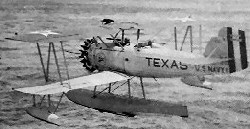 |
#5 O2U-1 by Vought |
28 June 1928 to June 1930: (brought aboard in October) The 20 Oct 1928 ship's newspaper has an article about the new O2U being aboard. |
|
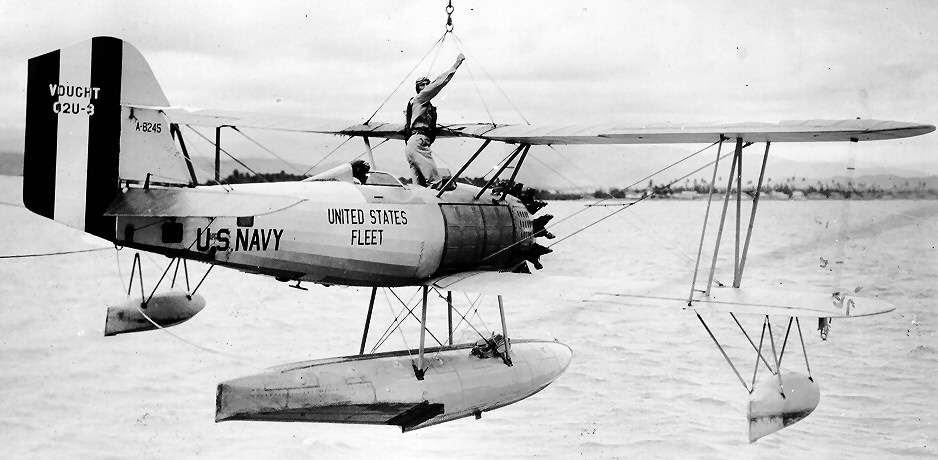 |
#6 O2U-3 by Vought |
June 1930 to June 1931 The airplane for the CinC US Navy, which is designated by the fuselage marking "United States Fleet". |
| President Calvin Coolidge |
As the US Navy flagship, BB35 transported the president to Havana, Cuba, arriving on 15 January 1928. (This was before the days of Presidential air travel).The president came aboard at Key West . . The compartment of the left side of mast leg and above (with the group of people below) is the movie projector room.
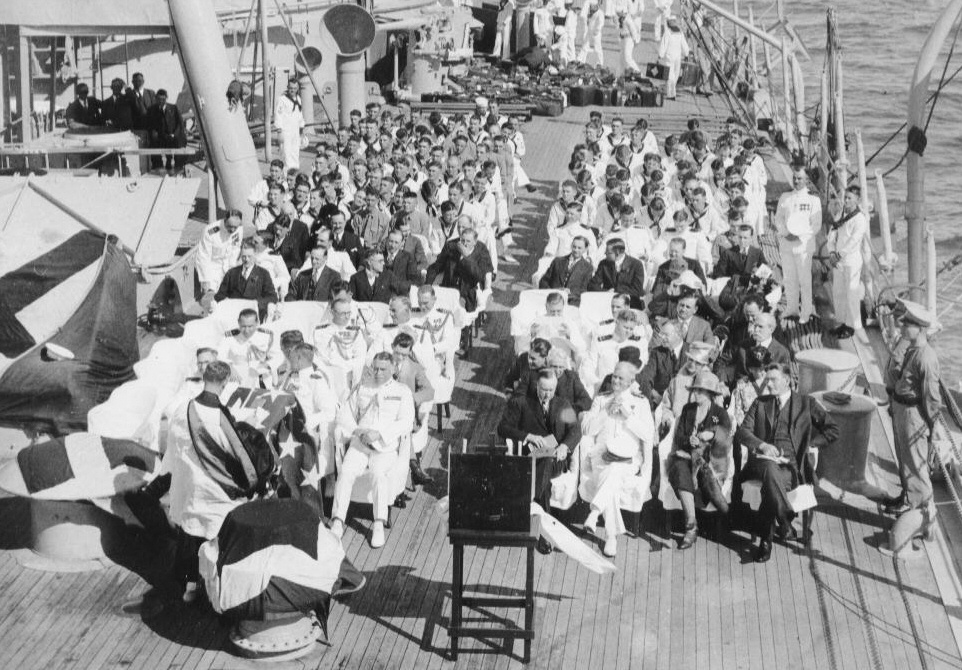 |
| Charles Lindbergh |
| During the February 1929 Panama Canal crossing,
to the West Coast, the aviation pioneer came aboard on the 6th, while docked in
the Panama Canal Zone.
The exact date is not known but a Time Magazine dated editorial of 6 Feb 1929
references an address Lindbergh made aboard TEXAS "the other night". The airplane shown here is a Vought O2U-1. The identification is based on the O2U-1 being the only airplane aboard TEXAS when Lindbergh was aboard. It is unknown if Lindbergh flew off of BB35 in the airplane |
||||
| From BB35 veteran Dal Jines 1929 to 1930. | From family of BB35 veteran Hans Kittle 1931 to 1934. | |||
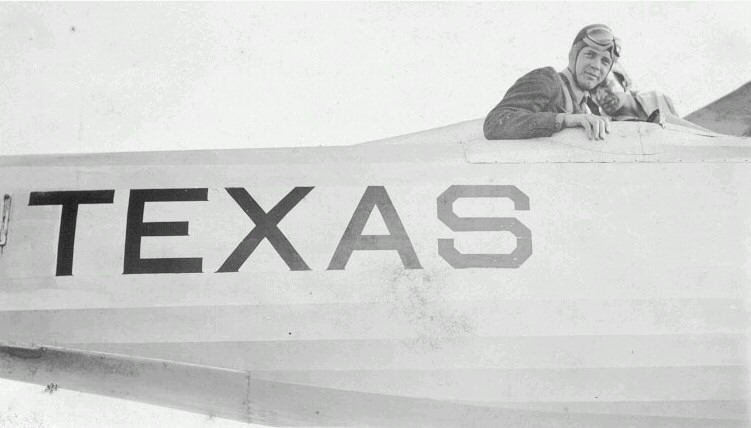 |
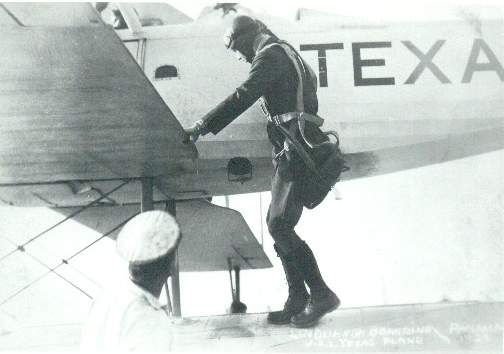 |
|||
.
Started 11 May 1999 Chuck Moore, FTV (1st Texas Volunteers) BB35 volunteer group